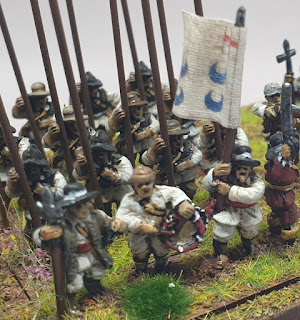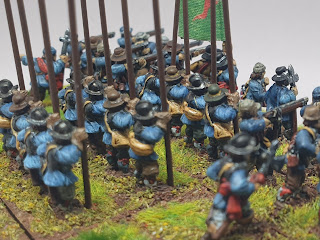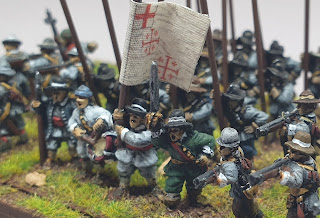Prince Rupert’s Regiment of Horse

Prince Rupert's Regiment of Horse - the epitome of dashing cavaliers. Rupert was of course, King Charles's nephew, started his military career at age 14 when he accompanied the Prince of Orange on campaign. He arrived in England in August 1642 with his brother, Maurice, and a retinue of battle hardened English and Scottish veterans of the wars in Europe. Often seen as hot bloodied, and in command when the Royalist army committed some of the worst atrocities of a brutal barbaric war, he was also capable of leniency against foes who had put up a brave fight. Of course no mention of Rupert can fail to mention his poodle Boye; Boye wasn't a 1970's toy poodle (as depicted in the film Cromwell) but instead a hunting dog. Rupert's life and career was somewhat fantastical, there is not space to summarise his life in a few short paragraphs. After what can only be described as a swashbuckling life he died in November 1682 of pleurisy. He is buried in Westminst...








